It was designated as village and county seat on 3 July, 1839. Povoação was the first place settlers set foot on upon reaching the island of São Miguel. Vila da Povoação is the largest parish of the municipality of Povoação with about 2 424 inhabitants.
Vila da Povoação is formed by the centre, outskirts - Comissão and Morro - and five hills: Lomba do Carro, Lomba do Cavaleiro, Lomba do Botão, Lomba do Pomar and Lompa dos Pós. The name Lomba do Cavaleiro was probably chosen in honor of a local inhabitant, the wealthy landowner Martim Vaz, called “Caveleiro from Nordeste”. Lomba do Carro was the first hill from where oxcarts had access to the centre of the village, fact that probably originated its name. The toponym Lomba do Botão perhaps is because of the corrupt - shaped Vultão or "Bultão " proper name of an individual who lived there before . Lomba do Pomar was so called because of the vast orchards of chestnut trees found thereLomba dos Pós perhaps is because of the forced corruption of "Lomba do Pão" .
The festivities in honor of its patron saint, Nossa Senhora da Mãe de Deus, are held in the first weekend of September, when many emigrants visit the region to spend the holidays with their family.
One of the delicacies of the parish is the so called "fervedouro" and liver sauce with yams or sweet potatoes. Local craftsmen are primarily dedicated to creating corn dolls, paper flowers, patchwork quilts, lace, embroidery, objects in fish scale and stonemasonry.
The economic wealth of the county since its settlement and even nowadays is attributed to the cultivation of cereals, mainly maize and wheat, which led it to be known as "breadbasket of the world".
What to see in this parish:
*Church of Nossa Senhora do Rosário
The church was the first to be built on the island of São Miguel, built in 1553 by João Arruda and known as the “old matrix of Povoação”. It is classified as a property of public interest. In the past, this church invoked Nossa Senhora dos Anjos. During the 16th century, Nossa Senhora da Mãe de Deus. After the construction of the new church on a different location, it is now called Nossa Senhora do Rosário.
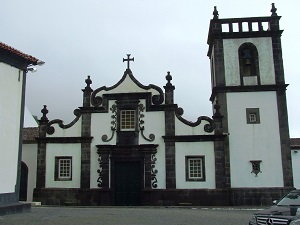
* Church of Nossa Senhora de Fátima (Lomba do Botão)
This church dates back to 1966. It is located roughly half way through Lomba do Botão and is dedicated to Nossa Senhora de Fátima. The first stone of this church was blessed on 13 May, 1966. It has a modest and modern look.
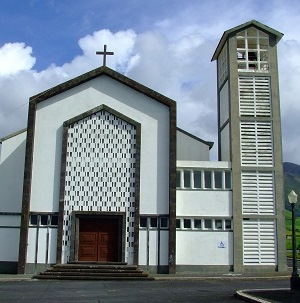
* Church of São José (Lomba do Pomar)
Church dating from 1976 which occupies a central position on the Lomba do Pomar.
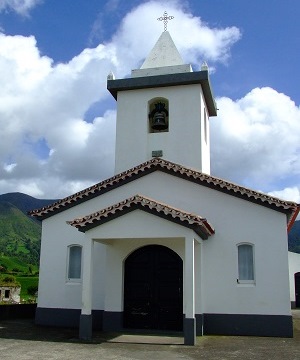
* Church of Nossa Senhora da Mãe de Deus
Church built in 1848 in the town center, opened in 1856. Known as Matriz Nova of Povoação. The front bears the inscriptions "NSMD" and "1856".
* Church of Santa Bárbara (Lomba do Carro)
This chapel was built by Mateus Dias in the 15th century. It is the oldest chapel of the island, where that the first mass was celebrated after the discovery of São Miguel. It was rebuilt in 1864 and 1981.

* Parish Center of São Pedro (Lomba do Cavaleiro)
Lomba do Cavaleiro has no church, nevertheless a parish fulfills those functions. São Pedro is the patron of this locality.

* "Alminhas"
"Alminhas" are artistic and religious heritage that occupy strategic points in the parishes. They are signs of religious experience and the physical experience of the territory . In Vila da Povoação there are two "Alminhas":
1. Located on the road that connects Lomba do Botão to Lomba do Pomar. It is decorated with blue, white and yellow tiles, and is surmounted by a red cross.
2. Located on the outskirts of Lomba do Pomar, near the Picnic Park. Nossa Senhora da Conceição is one among other images that decorate the interior.
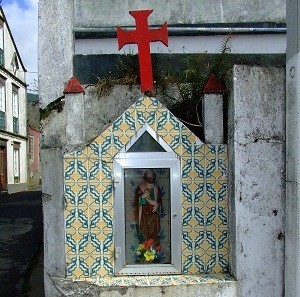
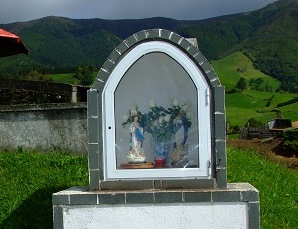
* Triato of Holy Spirit
“Triatos of the Holy Spirit” are constructions associated with the festivities in honor of the Holy Spirit, intended to display the symbols of the Holy Spirit, including the royal crown surmounted by a dove, flag, scepter, traditional masts. They are built in a rectangular one floor plan. There are six Triatos in Vila da Povoação:
1. Located on Rua da Lomba do Botão. It has three arched doorways and bears the inscription "1878" and one of the symbols of the Holy Spirit, the crown, crafted in basaltic rock.
2. Located on Rua do Carro.
3. Located on Rua do Carro.
4. Located on Rua Manuel José de Medeiros. It is topped by one of the symbols of the Holy Spirit, the crown. It is known as “Empire of the Holy Spirit”. The front features a panel of tiles with a symbol of the Holy Spirit, the dove, and the inscription "RESTORED BY DEVOTED MEN OF THE SEA".
5. Located on Rua da Lomba dos Pós.
6. Located on Rua da Chã de Cima. It has a door and arched window.
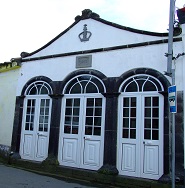
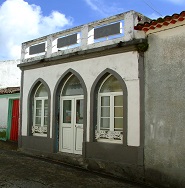
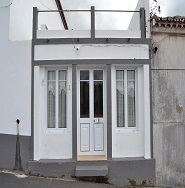
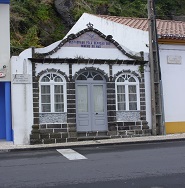
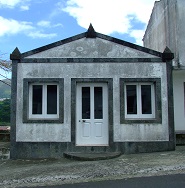
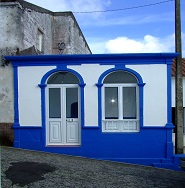
* House of Mordomias
The Parish Lomba do Loução is known for its "Mordomias". Located on Rua de João Loução, they are associated with the festivities in honor of the Holy Spirit, for the storage of utensils used in the confection and distribution of soups and other traditional dishes of those festivities. Located in Lomba do Pomar, along the Municipal Road.
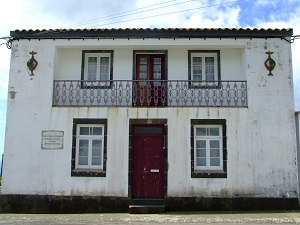
* House of the Holy Spirit
The House of the Holy Spirit Social and Cultural Centre was inaugurated on 22 May, 1994. The Houses of the Holy Spirit are attached to the festivities in honor of the Holy Spirit used for storage of utensils used in the confection and distribution of soups and other traditional dishes of those festivities. Located in Lomba do Botão, along the Municipal Road.
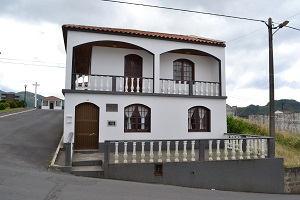
* Fountains
The fountains played a very important role in people's daily life. In a not too distant past, there were no sources of tap water to supply several localities. There are ten fountains in Vila da Povoação:
1. Located on Rua do Carro. It has a reservoir for excess water that serves as a trough for animals. Built entirely in basaltic rock.
2. Located near the Church of Nossa Senhora da Mãe de Deus. It is tiled and arch-shaped. Inside there are benches flanking the tap.
3. Located on Rua Infante Sagres. White frame and basaltic rock basin.
4. Located on Rua da Fonte Nova. Bears the inscriptions "1965" and "CMP". and is ornamented with a white tiled niche.
5. Located at Pé do Salto. Inserted into a wall structure, forming a niche. Beside the niche, a second basin serves as trough for the animals.
6. Located on Rua da Lomba do Botão.
7. Located in Lomba dos Pós, at the end of Rua do Morro. Niche structure decorated with blue and white tiles and flanked by benches.
8. Located in Bairro da Caridade. It was built in 1899, after the great flood of 1896. It presents two basins, one on each side, supported by a projecting foot, and bears embossed images and inscriptions on limestone, embedded in the structure.
9. Located in Canada João Bento.
10. Located at Lugar do Morro. All the structure is built on basaltic rock.

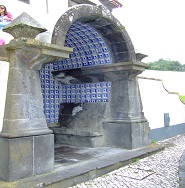
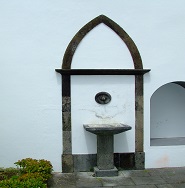
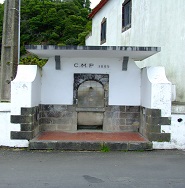
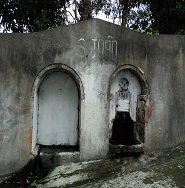

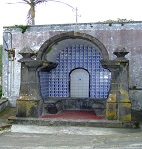

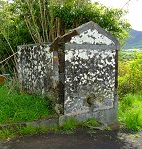
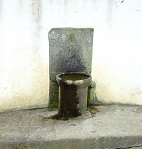
* Bandstand
The bandstand is used to shelter music bands during concerts, festivals and other events. It is a symbol of celebration and remains, to this day, an important stage for performances to many communities. On Vila da Povoação, there are six bandstands:
1. Located on Rua da Lomba dos Pós. It has access stairs and is covered with tiles.
2. Located next to the church of Lomba do Botão. It has access stairs and tiled roof.
3. Located in the center of the garden, near to the church of Lomba do Pomar. It has access stairs and is covered with tiles.
4. Located in the center of the garden, next to Centro Paroquial de São Pedro. It is also adorned with the Cross of Christ.
5. Located in the Public Garden of Povoação. Ornamented throughout your round with the Cross of Christ.
6. Located on the Municipal Road - Lomba do Carro. Flanked by cobblestone, it has access stairs and tiled roof.

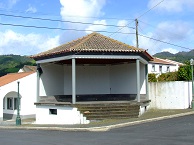
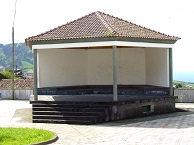
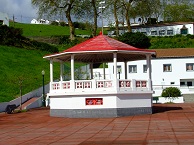
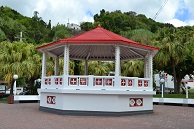
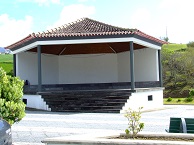
* Rear Lights
Taillight located on the west jetty at Porto de Pescas of Povoação. Built in 2003. The two taillights that exist in the Povoação, the lighting of a reach three miles and the other reaches 6 miles. Are structures that allow local navigation support.
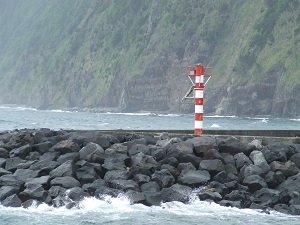

* Monument of the Discoveries
Commemorative structure located in Povoação. At the top of the monument rests a Portuguese shield surmounted by a cross of Christ. It bears the inscription "1432", at the time considered to be the year of discovery of the Azores, although subsequent historical researches have agreed on the year of 1427.
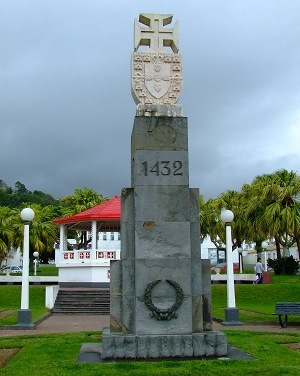
* Gates of Settlement
Monument opened in 2005, for the 166th anniversary of the designation of Povoação as municipality (July 3). Represents the location where the first settlers landed on the island of São Miguel. It consists of small embossed images of prominent figures of that time.

* Ruins of the Fort of Nossa Senhora da Mãe de Deus
The old Mother of God Fort was known as "the Castle of Povoação" or "Afonso Vaz." According to historical data, the fort occupied about 300 m2 and had nine guns, therefore, it was considered as one of the best defenders of the Island. Its construction dates back to the second half of the sixteenth century and served to protect against pirate attacks. Today only the foundation of this infrastructure stands with window holes that were used to keep watch over the island.
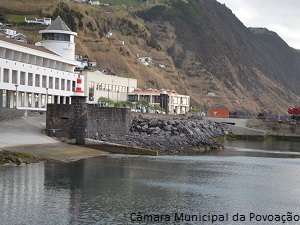
* Old Town Hall
Located next to the church of Nossa Senhora do Rosário, on Praça Velha, it was inaugurated in 1856. The building has been restored into a Center of Information - Tourism and Handicraft from Vila da Povoação. It is classified as a value council by Resolution No. 25/99 of 29 January.
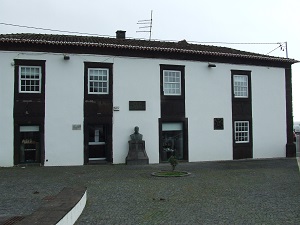
* Current Town Hall
Building dating from 1865, closed in 1869. After being restored, it became the seat of the Municipality of Povoação.
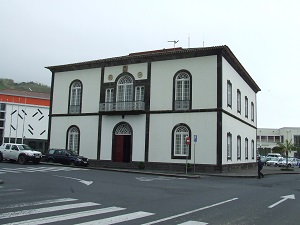
* Viewpoint of Ramalho
Located on the Regional Road of Povoação, this space provides a view over the surrounding area, including Vila da Povoação.
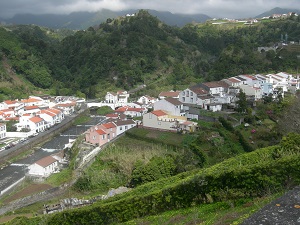
* Viewpoint of Lomba do Cavaleiro
The Viewpoint of Lomba do Cavaleiro is located on the Regional Road from Lomba do Cavalheiro. It offers a beautiful view of the village and neighboring urban areas.
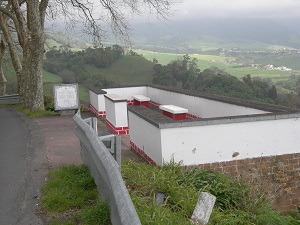
* Garden of Manuel António Vasconcelos
Small garden with flowerbeds and a large tree to provide shade. This garden pays homage to Manuel Antonio Vasconcelos, a supporter of the council of Povoação, deputy in the court of D. Maria II and founder of the newspaper Açoriano Oriental.
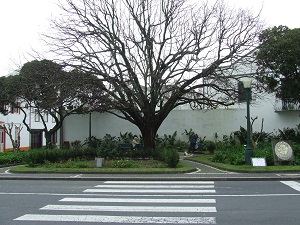
* Municipal Garden of Povoação
This garden was built in the 1940s as part of the reconstruction of the historic town center, following the destruction caused by the earthquake of 1935. It has lawns, flowerbeds and wide paths. The trees reduces the plantains and dwarf palm trees surrounding the enclosure. The bandstand is decorated with the "Cross of Christ", used in Portuguese caravels. The Monument to the Discoveries, dating from 1432, stand out.
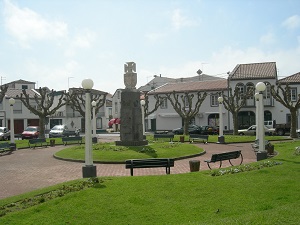
* Zoological Park of Povoação
Located on Rua Manuel José Medeiros, in the center of Vila da Povoação. With various species - notably of exotic birds and simians - it is a fascinating place for children.
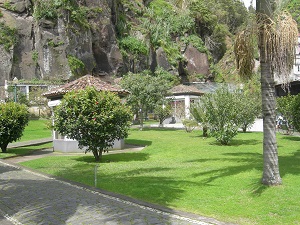
* Picnic Park of Lomba do Pomar
Located on the Municipal Road from Lomba do Pomar, it provides haystacks , grills, tables and benches in stone.
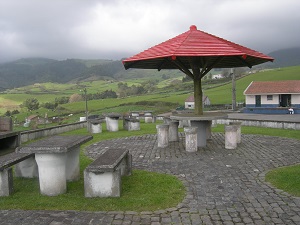
* Picnic Park of the Estrada Regional da Povoação (Agrião/Redondo)
Situated on the bank of the Regional Road of Povoação, it provides grills, benches and tables of stone.
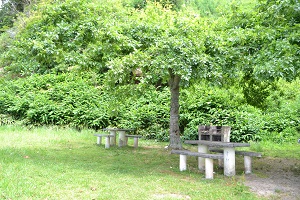
* Picnic Park of Lomba do Cavaleiro
Situated on the bank of the Municipal Road from Lomba do Cavaleiro, with three tables and benches in stone.
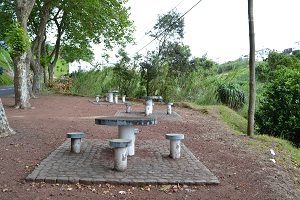
* Beach of Pelames
Beach of fine sand, not permanent, bounded on the west by drained lava and east by an artificial breakwater. During the spring high tide, dry sand disappears, due to their reduced extent. Highly popular, even though unsupervised. Parking lot.
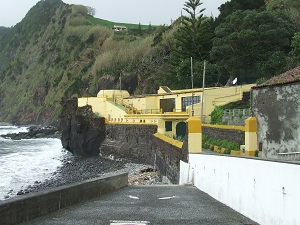
* Beach of Morro
Pebble beach, located in Lugar do Morro. Highly popular, even though unsupervised. The hillside that surrounds the area is unsuited for bathing. Parking lot.
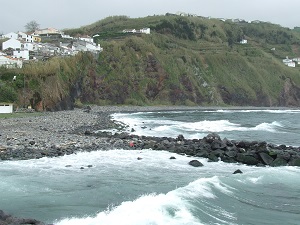
* Small harbor of Povoação

* House of Watermill
Old private house with two mills (one for wheat and one for corn), which were still in operation until 2008. An exhibition of objects and antique utensils is displayed. The store has typical products of the Azores (embroidery, liquors, crockery, etc.), as well as crafts from other regions of Portugal, notably Alentejo and Algarve. Many of the articles are nevertheless made here: the hue embroidered dolls, corn leaf and banana leaf folk costumes.
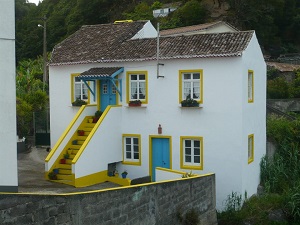
* Information Centre - Tourism and Handicraft of Povoação
Located on the ground floor of the Municipal Library, a “mini-museum” illustrates a number of professions, such as the shoemaker and the weaver. In addition, visitors can discover some secular objects that were part of the daily lives of our ancestors, with special highlight to a typical kitchen and bedroom, where many of the objects are centuries old, donated by residents of the council of Povoação.

< Previous page